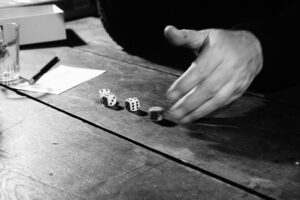Read time 8 minutes
First off, thank you, Universe. Every day I wake up, I feel blessed. Recovery isn’t linear, nor is health, but both are worth fighting for. If you’re reading this blog, welcome to my world of reflection, resilience, and extensive research.
Introduction
The night was thick and heavy in 2017, the air sticking to my skin. Somewhere between sleep and waking, it hit, a sudden, violent twitch that tore me out of my dreams.
My limbs burned with strange electricity. The room was silent, but inside me, something was breaking.
In that stillness, a cold truth sank in: my body was no longer mine…
The weeks that followed were a blur of hospital rooms and serious faces. Each diagnosis felt like another blow.
A rare neurological condition, they said.
Painful stiffness…
Uncontrollable twitches. An illness that had moved in without warning.
But it didn’t stop there. Other diseases crept in, each one adding its own weight. They didn’t just hurt my body; they chipped away at who I was.
My toughest battle wasn’t with any one illness; it was with the false belief I grew up with that needing help meant I wasn’t strong enough.
This is the story of how I shattered that myth, reclaimed my strength, and learned to ask for help as my secret weapon.
Over time, with experience, I discovered that asking for help doesn’t signal weakness; it unlocks resilience.
My Multi-Diagnosis Reality
When you receive a single medical diagnosis, your world shifts. But grappling with six or seven? That shattered my sense of stability.
A rare disorder of peripheral nerve hyperexcitability. My motor nerves continued to fire, causing cramps and stiffness. Scientific studies estimate its prevalence at around 1 in 100,000 people.
It is caused by Borrelia burgdorferi. It is a bacterial infection that triggers fatigue, fever, and joint pain. Without early treatment, it can invade the nervous system.
Elevated intraocular pressure damages the optic nerve. Left unchecked, it can cause irreversible vision loss.
Membranous Glomerulonephritis:
Here, immune complexes deposit in the kidney’s filtering units. It impairs their function and leads to proteinuria.
Plus:
Irritable Bowel Syndrome (IBS), affects 10–15% of adults worldwide. Diabetes, impacts over 460 million. Blood Pressure issues plague nearly a quarter of all adults. Frozen Shoulder, and Eczema further complicated daily living.
Doctor’s visits swallowed my calendar. Medication bottles took over my nightstand. Anxiety and uncertainty became my constant companions.
I lay awake one night, thinking: This is forever. I’m utterly alone.
The Moment I Picked Up the Phone

Spring 2017.
Two days without sleep. Isaacs’ cramps were twisting my muscles like wires pulled too tight. Glaucoma steroids were making my vision throb.
Energy gone.
My family was asleep. At 6 a.m., without thinking, I reached for my phone and dialled my cousin’s number.
When he answered, my voice was barely there. “I don’t know how much longer I can do this.”
No sigh. No irritation. Just a calm question: “Archith… how are you really?”
In no time, he was at my door. He knelt beside my bed, took my hand, and said, “Asking for help isn’t weakness. It’s how you keep going.”
Something broke open inside me. Within days, he’d found me an occupational therapist and an adaptive yoga teacher.
For the first time in months, I felt a spark, small but alive. That call changed everything.
It taught me that reaching out isn’t the end of the fight. It’s the first move toward winning it.
Letting go: The first real step toward getting Better

For weeks, I carried it alone.
I told myself I could handle it.
That if I just pushed harder, I’d get through. That no one needed to know.
But the weight kept growing.
It followed me into every room, every conversation, every sleepless night.
I started avoiding calls. Ignoring messages.
Not because I didn’t care, but because I didn’t want anyone to see the cracks.
One night, I sat staring at my laptop. A blank email glowed on the screen. My fingers hovered over the keyboard, frozen. If I sent it, there’d be no taking it back. They’d know.
Hours passed. My chest felt tight. My mind kept whispering: You’ll sound weak. You’ll sound desperate.
And then almost without thinking, I pressed “send.”
The reply came quickly. Not pity. Not judgment. Just understanding.
And an offer: Tell me what you need.
That’s when I realised the truth I’d been avoiding all along: I hadn’t been holding on to my strength. I’d been holding on to my fear.
And letting go was the first real step toward getting better.
The Science of Support: Why It Works

Why does reaching out change everything? The answer isn’t just emotional, it’s wired into our biology.
1) The Bonding Switch:
When someone truly listens, our brain releases oxytocin, the “bonding hormone.” It calms our system, lowers stress, and tells our body: We’re safe.
2) The Stress Reset:
In 2012, researchers found that sharing worries with a trusted friend drops cortisol. It is the main stress hormone.
Lower cortisol means steadier blood pressure, better blood sugar control, and a stronger immune system. All are vital when we’re fighting a chronic condition.
3) The Extra Brain:
Two minds see more than one. A fresh perspective can reveal solutions we’d never spot alone, whether it’s a new treatment, a work adjustment, or a shift in mindset.
4) The Resilience Network:
A 2020 study showed that strong social ties improve recovery, reduce hospital readmissions, and boost quality of life.
Once I learned this, I stopped seeing help as charity. I started seeing it for what it really is. For me, it is a part of my prescription; my body and mind are built to respond to.
Building a Support Network: A Step-by-Step Map

When life started feeling like a maze I couldn’t escape, I built a map. Not for places but for people.
Step 1: Found My Allies
- Friends & Family: I chose the ones who listened without rushing to judge or ‘fix’ me.
- Professional Contacts: Reached out to old coworkers or mentors, I’d be surprised who’s willing to help.
- Patient Communities: Searched for groups that understood my specific condition. They spoke my language.
Step 2: Knew What I Required
- Emotional Support: A call or text every couple of weeks.
- Practical Help
- Expert Advice: Second opinions, new treatment ideas, or alternative approaches.
Step 3: Asked
- Set Reminders: Every few months, reviewed where I needed support.
- Use Templates: Kept a few short, ready-to-send messages for when asking felt hard.
Step 4: Gave Back
- Said Thanks: A quick text or note meant more than I thought.
- Paid It Forward: Shared resources or advice when I could.
- Celebrated Together: Let my supporters share in my wins; big or small.
When I turned help-seeking into a habit, something shifted. My isolation faded. The weight I was carrying felt lighter. And I realised, sometimes the strongest move we can make is to stop walking alone.
My Comeback
Suddenly, my ‘lost years‘ looked like I was training for something new. It didn’t happen all at once. But over a couple of years, every time I asked for help, something shifted, and the shift began to build.
Career Reboot
A former colleague helped me rebuild my résumé. We highlighted the skills illness had sharpened, resilience, project management during flare-ups, and empathy in communication.
Physical Rehabilitation
Through a patient community, I found a physiotherapist who specialised in frozen shoulder. Virtual sessions slowly gave me back 80% of my mobility, along with a sense of control.
Writing Mentorship
A journalist friend taught me how to shape my experiences into a clear, compelling voice. And, the words started to flow.
Peer Support Network
Virtual meetups with other chronic illness advocates became helpful. We traded coping strategies, celebrated small wins, and made the hard days lighter.
By 2019, I was freelancing as a health storyteller, blending my finance background with my lived experience. By 2021, I was partnering with NGO’s to raise rare disease awareness.
Looking back, the momentum didn’t come from one big breakthrough. It came from a series of small, deliberate asks, each one unlocking the next door.
Actionable Tips: Turn Help into Quiet Advantage

Help isn’t just kindness; it can be strategy. Here’s how I turned it into my hidden edge:
1. My Help Board:
I kept a running list on my phone of tasks I couldn’t do alone. I updated it once every 15 days.
2. The Ask Script:
I didn’t leave my request vague. Said exactly what I needed.
3. Support Sessions:
I set up regular check-ins with my allies through calls and messages.
4. Normalise Mutual Aid:
I spoke openly about how help has made a difference in my life. It permitted others to ask and to offer.
These small, deliberate moves turned help-seeking from an awkward last resort into a quiet force that kept me moving forward.
The best part? No one saw it coming until they noticed me winning battles. They didn’t even know I was fighting.
Conclusion: An Invitation to Strength
For a long time, I carried it all alone.
Then one small act changed everything. I asked for help. And the battle I thought was mine alone became a shared fight.
If you’re facing a chronic illness or any health challenge, try this today:
- Choose one person you trust: a friend, family member, or mentor.
- Send a short message: “I need your support with ____.”
- Be clear: say if you need a listening ear, a ride, or a daily check-in.
- Celebrate that first step: it’s the seed of your support network.
When you reach out, something shifts. Isolation starts to dissolve. Your story changes from “I can’t” to “we will.” Asking for help isn’t surrender. It’s a strategy. It’s courage. It’s the quiet beginning of your comeback.
DISCLAIMER
The views expressed in this article are the author’s own and do not represent any medical advice.


